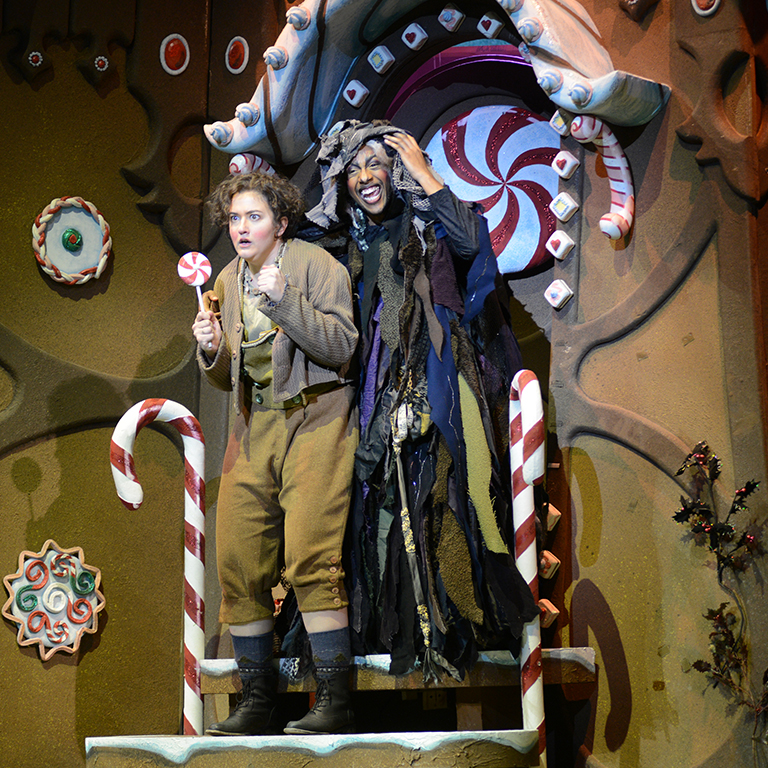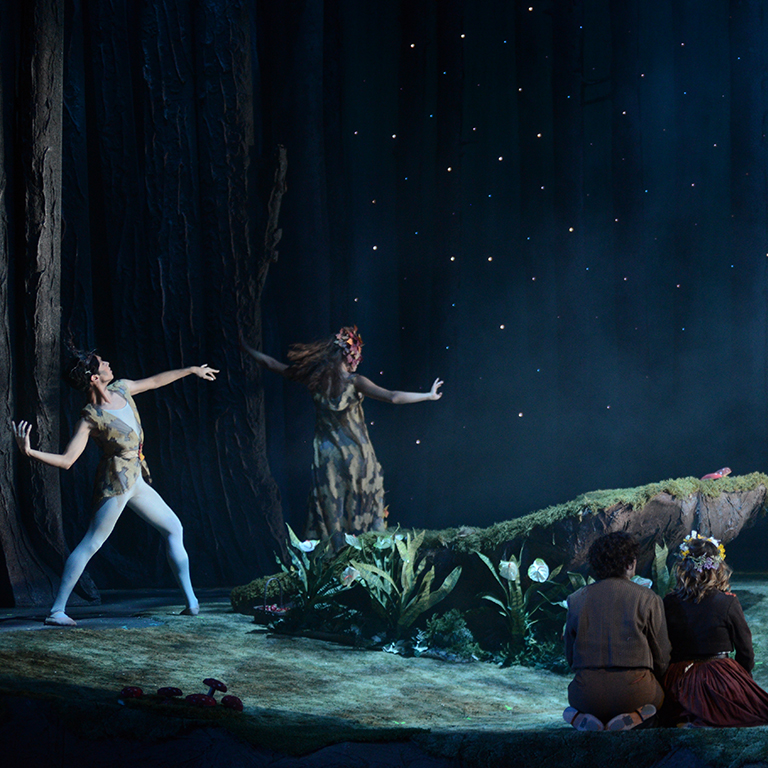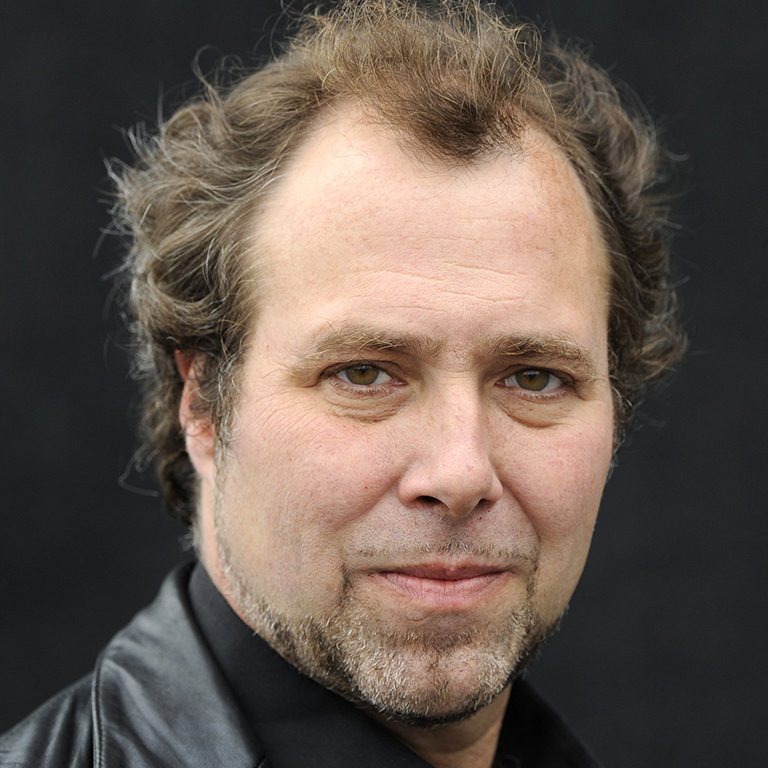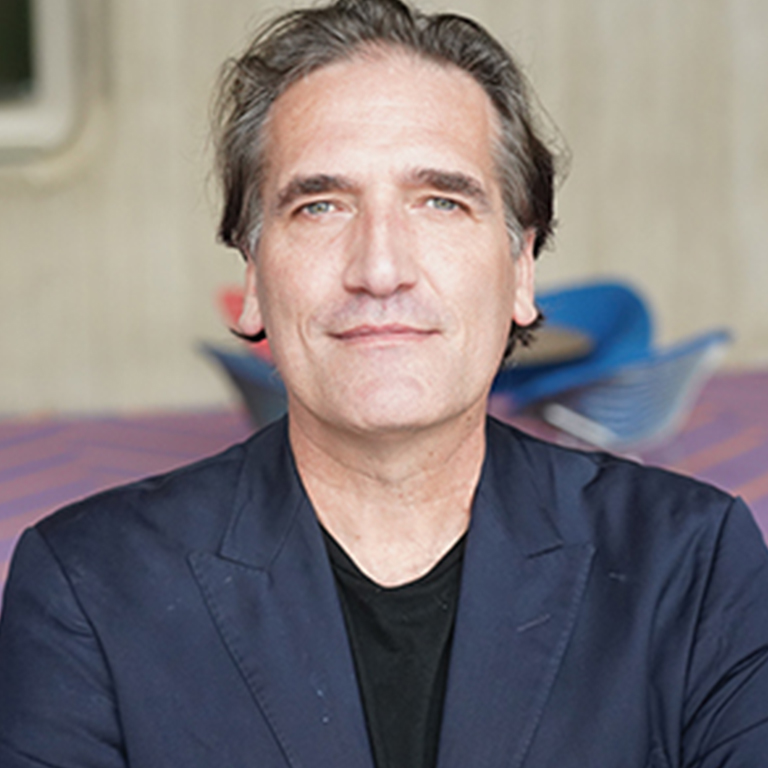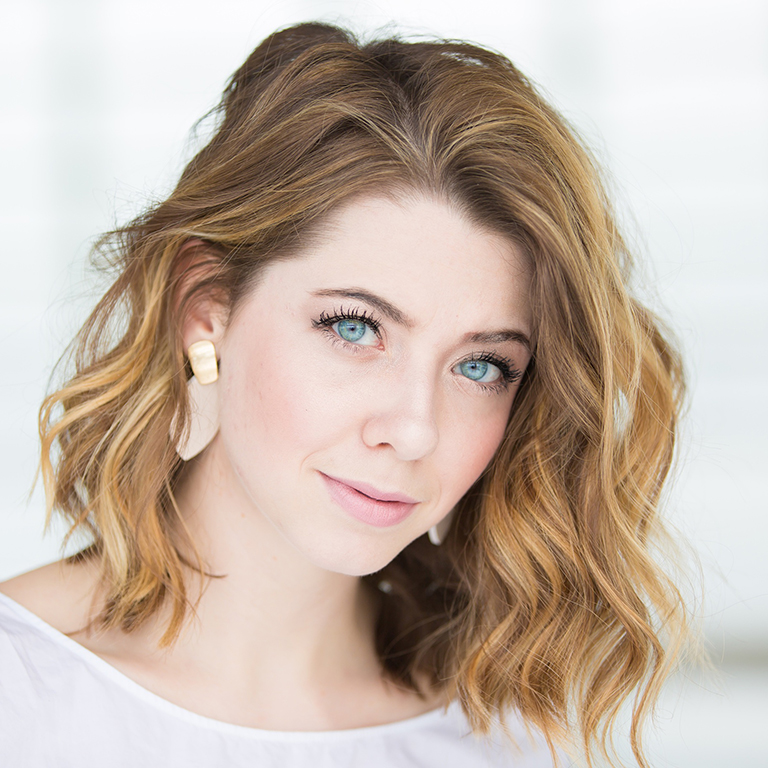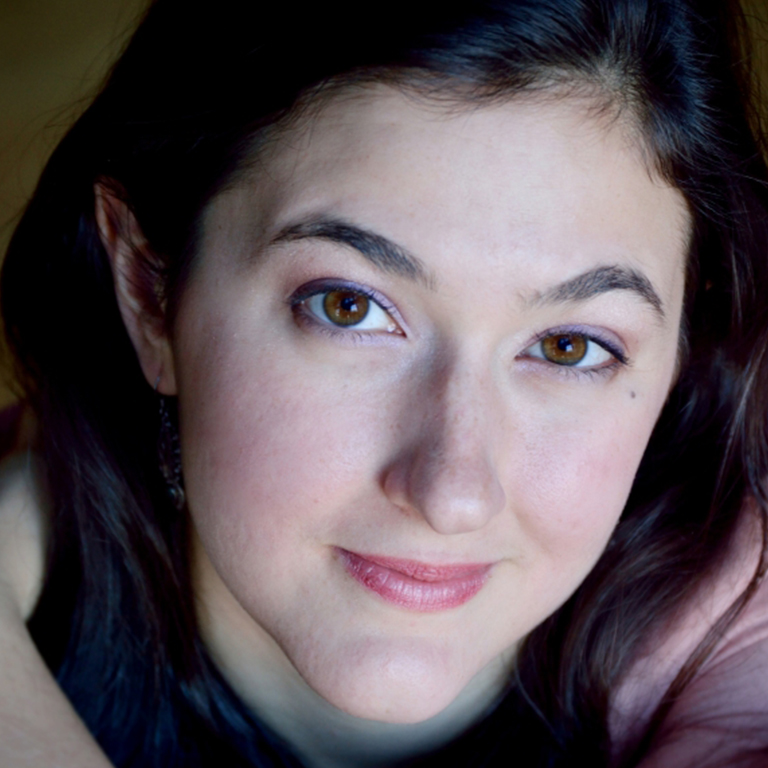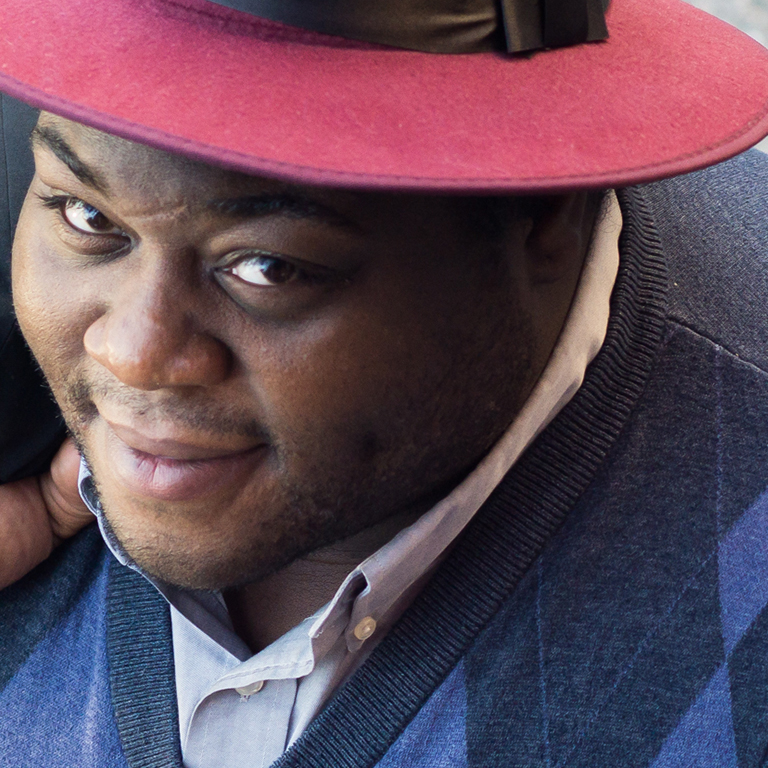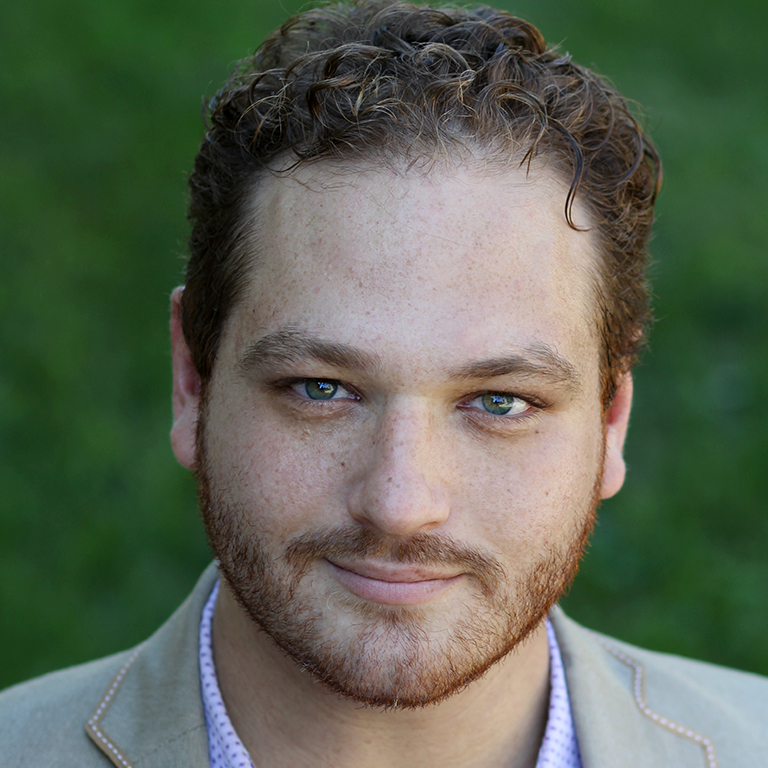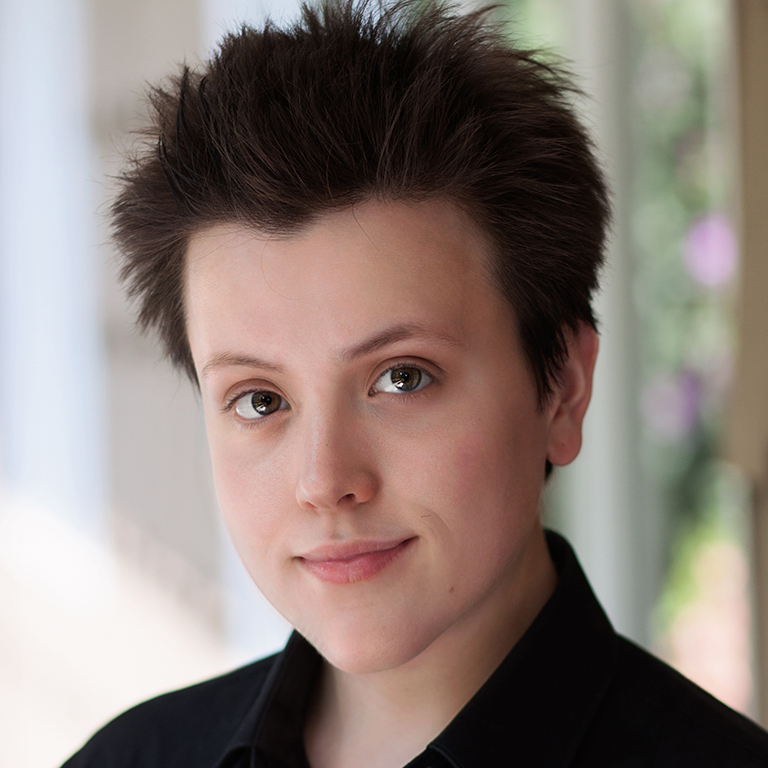Act I: Hansel and Gretel’s Home
The curtain rises on a cottage at the edge of a deep forest, the home of Hansel and Gretel and their mother and father. The family is poor, and the parents are out trying to earn money to buy food while the children are left at home to do the chores.
The brother and sister lament their hunger. Gretel then discovers milk left by the woman next door. The news so excites Hansel that he cannot work. The children decide to dance. Gretel teaches her brother the steps, and they sing as they whirl about the room.
The children’s impulsive romp is interrupted by the return of their stern mother, who scolds them for not doing their chores. In her anger, Mother knocks over the pitcher of milk. That is the last straw. She sends the children out into the forest to find strawberries for supper.
When the children are gone, she drops off to sleep. A voice is heard in the distance. It is the father, returning from a fair, where he has sold all of his brooms. When Father asks about the children, Mother explains that they had not done their work and that she sent them into the forest to search for food when the pitcher of milk got smashed. Father is stunned.
“A witch lives in the forest with power from the devil himself! She bakes children in the oven and eats them!”
The two parents rush off to rescue Hansel and Gretel.
Act II: In the Forest
The two children are in the middle of a forest of huge trees. Gretel sits on a mossy rock, weaving a crown of wild flowers. Hansel is looking for strawberries. He finds enough to fill his basket and then crowns Gretel the Queen of the Forest.
Suddenly, the sound of the cuckoo is heard. Hansel imitates the bird and begins eating the strawberries. Before long, the tired children begin to quarrel over the berries, and Hansel empties the basket.
But as it begins to get dark, the children’s high spirits turn into fear. They try to be brave, but as the mists rise, and their calls for help bring only echoes, they fall to their knees in terror.
The Sandman comes to calm them and puts them to sleep. The children sing their evening prayer and sink back on the moss. In their dream, the children see a light break in the mist, revealing a stairway leading up into the sky. Magical creatures from the earth begin to dance around the children as if to welcome them into their realm.
Intermission
(20 minutes)
Act III: The Witch’s House
It is morning, and the mist has retreated. The Dew Fairy wakes the children, who rub their eyes in disbelief, recalling the marvelous dreams that they experienced. Hansel turns around, and, in place of the trees, a Gingerbread House magically appears.
The house turns out to be a tasty concoction of pastry and cake, “the windows shining like sugar, and look, round the house, there’s a gingerbread fence. Come let’s nibble, like two mice!” Before long, the hungry mice arouse the owner. The door opens and there stands the Gingerbread Witch. She quickly traps them.
She offers them no end of treats, but the most wonderful treat—at least for her—she keeps a secret. The children try to escape, but the Witch freezes them in place with her magic wand. She leads Hansel off to a cage, where she plans to fatten him up for her supper. She brings Gretel back to life and tells her to set the table. She brings Hansel special food to make him “plump and tender” and checks the oven to make sure everything is ready.
She tests Hansel’s finger to see if he has gotten fatter. But the boy fools her by poking out a small stick instead.
While the Witch is feeding Hansel, Gretel steals her magic wand and breaks the Witch’s spell on her brother. When the Witch asks Gretel to open the oven door, the girl pretends she does not know how. The Witch bends forward to show her, and the children shove her into the flames.
The oven burns more and more fiercely, and, finally, it bursts into pieces with a loud bang and falls into ruins. Suddenly, Hansel and Gretel are surrounded by Gingerbread Children, who have resumed human form, yet appear to be asleep. Using the Witch’s wand again, Hansel brings them to life.
Suddenly, the father is heard in the distance. Hansel and Gretel cry in joy. They all marvel at the turn of events. The old Witch has been transformed into a giant gingerbread cake.
In a final chorus, all join in the motto that Father taught his children at the beginning of the story: “When our grief’s too great to bear, God will send his love and care.”
"From a Puppet Show to a “Family Headache” to the Opera Stage: Engelbert Humperdinck’s Hansel and Gretel"
by Matthew Leone
Ph.D. Musicology Candidate
Once upon a time, there stood a house in Cologne, Germany. And in this house, there lived a woman named Adelheid Wette, who, from time to time, would entertain her daughters, Isolde and Gudrun, with puppet shows. She would write the scenarios herself—often adapting them from Grimm fairy tales and other popular children’s stories—while her younger brother, Max, made the puppets, the scenery, and the little theater. Adelheid’s daughters were also talented singers, and sometimes they would take part in their mother’s puppet shows. One day, in April 1890, Adelheid was preparing a puppet show based on “Hansel and Gretel,” and she asked her older brother, Engelbert, to set some of her verses to music for Isolde and Gudrun to sing during the performance.
Engelbert Humperdinck, of course, said yes to his sister’s request, and with this fateful decision set into motion a series of events that would culminate in his greatest musical achievement three years later. Indeed, the story of how Humperdinck converted a few songs for a home puppet show into a full-fledged opera reads like a fairy tale in itself. Due to a combination of Humperdinck’s diligent work, unending support and input from his friends and family, considerable advocacy by performers and conductors, and a few minor miracles along the way, Hansel and Gretel established itself in the opera repertory soon after its 1893 premiere and enshrined the composer’s name into history. Like any good fairy tale, though, Humperdinck’s opera went through its fair share of trials and difficulties before reaching completion. We are fortunate that this particular tale should have such a happy ending.
The initial prospects were dark. To say the least, the likelihood of Humperdinck composing an opera around 1890 was already slim. Working in the shadow of Wagner’s colossal achievements had been difficult for Humperdinck and many other composers, and after a decade of opera projects failing to come to fruition, few could have predicted that he would write any opera that year, let alone an opera that started its life as four songs written for his sister’s home puppet theater. But Wette’s husband, Hermann, and the composer Hugo Wolf saw greater potential for these seemingly innocuous little pieces. By late 1890, after much encouragement, Humperdinck had expanded the original puppet show into a musical play, featuring 16 songs with piano accompaniment. Despite a successful performance at the Wette household, it was only a second round of encouragement from Humperdinck’s family that convinced him to turn the work into an opera for public performance, and not just domestic entertainment.
With the project in motion, however, a new pair of problems soon emerged: the task of crafting a full libretto, and creating a version of the Grimm fairy tale suitable to their vision. On the one hand, there were simply too many cooks in the kitchen: in addition to Humperdinck himself, his fiancée, Hedwig; Adelheid; Hermann; and the Humperdincks’ father, Gustav, all contributed to writing the libretto, a process Humperdinck referred to as “a family headache.” On the other hand, Humperdinck and company also wanted to present a lighter telling of the fairy tale, which required them to considerably retool the story. They were mainly working from Ludwig Bechstein’s 1847 adaptation of the original Grimm story, which had already softened many of the tale’s more frightful elements, but even this wasn’t enough for Humperdinck and his collaborators, and they proceeded to soften the tale even further. The cruelty of Hansel and Gretel’s mother, the children’s abandonment in the forest, and the more sinister qualities of the Witch are virtually absent in the Humperdinck family’s libretto. Instead, their interpretation of the story emphasizes Bechstein’s themes of divine protection and good triumphing over evil even more forcefully, while simultaneously reinventing Hansel and Gretel’s family as much more loving and tightly knit.
Even after the libretto and score were completed—an endeavor which occupied Humperdinck and his collaborators for the next three years—the opera itself could easily have failed due to its shaky opening night in December 1893. Despite having Richard Strauss calling it “a masterpiece of the first degree” and conducting the premiere at the Court Theatre in Weimar, problems with the copyists caused the overture to be omitted, while the singer scheduled to play Hansel fell ill, leading to several personnel shifts on short notice. Fortunately for Humperdinck, Germany’s musical world didn’t discard the opera. Perhaps most important was the active promotion of conductor Georg Richard Kruse, who founded a touring company for the work and staged over 70 performances in 1894. Critical acclaim and word-of-mouth popularity soon followed, and by the time Hansel and Gretel was performed in Berlin in October 1894, no less a man than Emperor Wilhelm II himself offered his praises. While these performances certainly warmed the public to the work, its popularity also owed something to fortuitous timing. After Wagner’s death in 1883, German critics sought new operas to promote in opposition to the modern Italian “realist” operas making inroads into German theaters. In Humperdinck’s Hansel and Gretel, with its Wagnerian use of leitmotives and its story drawn from a German fairy tale, these critics saw a perfect exemplar.
Throughout his long life, Humperdinck composed several other operas, works for orchestra, chamber music, and songs, and also had a successful career as a teacher and critic. Despite all of these achievements, his lasting fame rests almost entirely on Hansel and Gretel. To be sure, the survival of Humperdinck’s masterpiece owes a great deal to the strength of its own musical and dramatic qualities. The opera’s deft blend of leitmotives, rich orchestration, tuneful melodies, and a lighter take on the Grimm fairy tale have greatly heightened its appeal, while the “Pantomime Scene” at the close of Act II ranks as one of opera’s most fantastic set pieces. But as we have seen, the support and advocacy of Humperdinck’s colleagues, family, and friends also contributed greatly to both the opera’s creation and its enduring legacy. Certainly, Humperdinck leaned heavily on his family’s initial encouragement, and without Kruse’s rigorous tours in 1894, the work might have been quickly forgotten. In the end, however, the fact that our presence at this performance owes everything to a humble puppet theater in the house of Humperdinck’s sister makes Hansel and Gretel nothing short of an operatic miracle.






